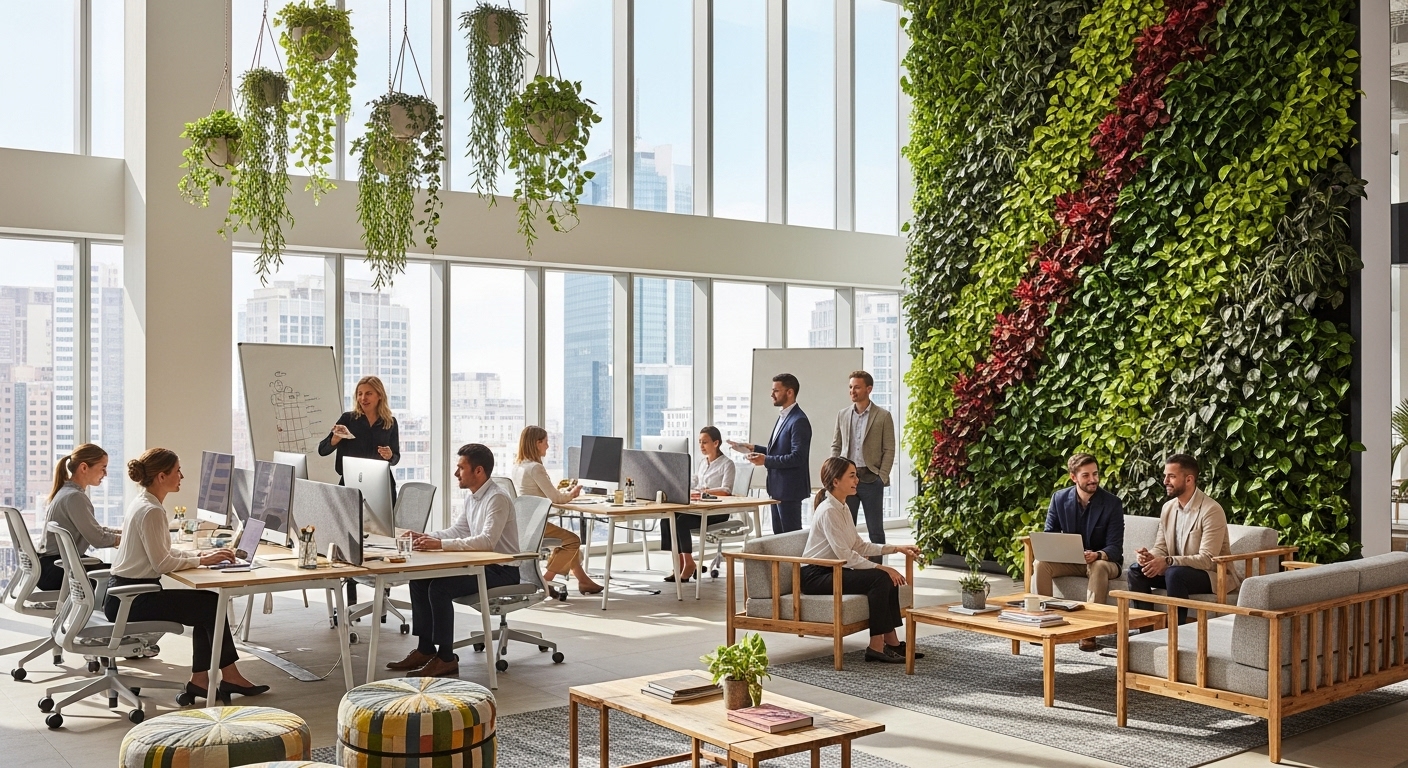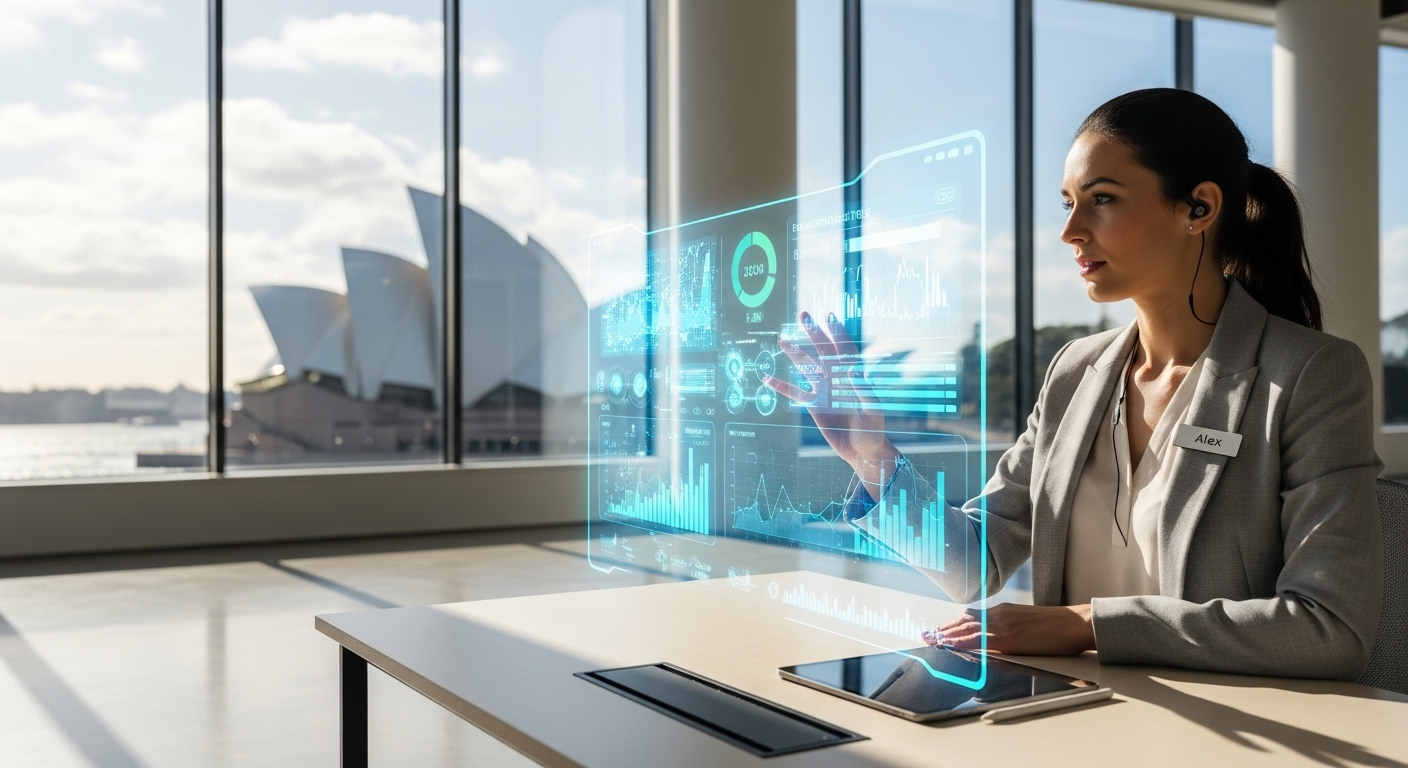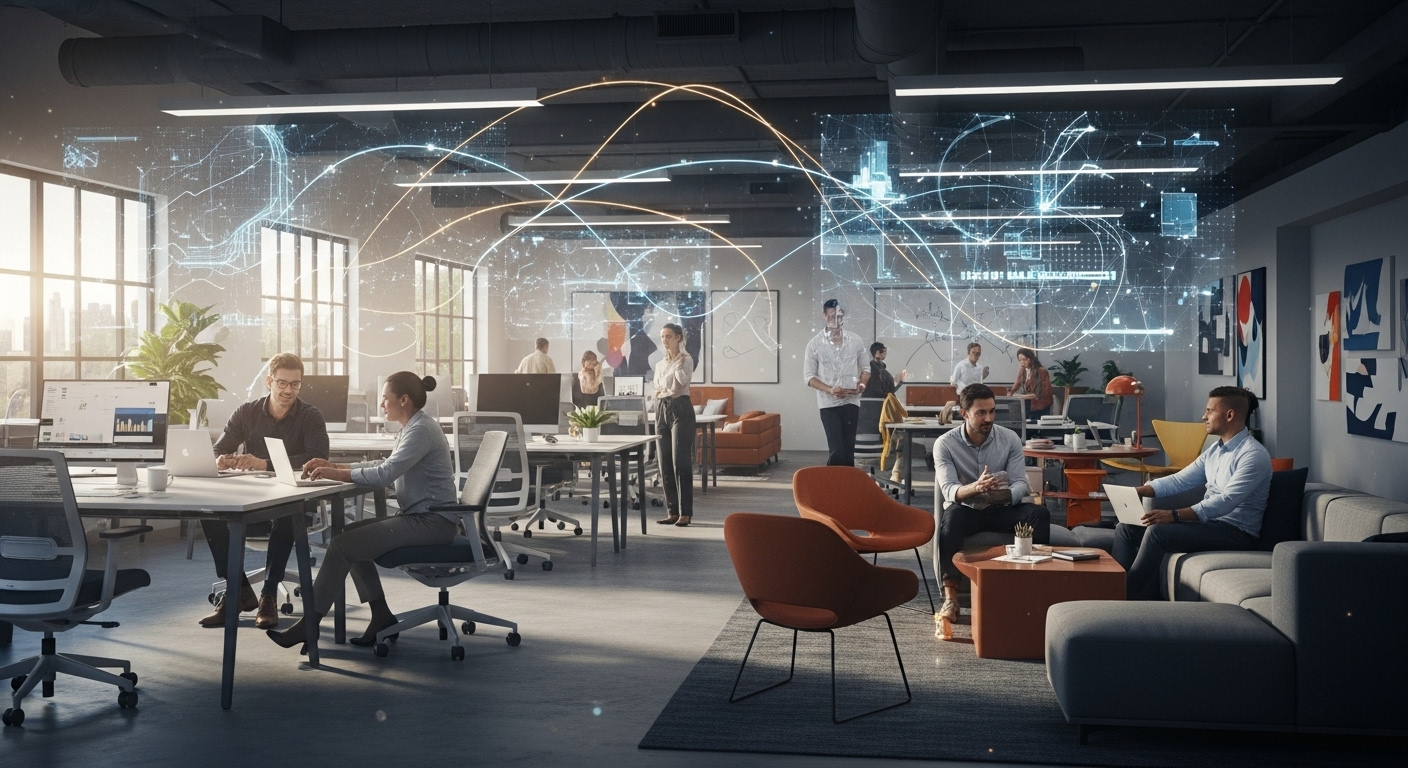In today’s competitive landscape, the concept of a sustainable workspace has evolved from a ‘nice-to-have’ perk into a core business strategy. Forward-thinking companies now recognize that sustainability is not merely about reducing their carbon footprint; it’s about creating a holistic, human-centered environment that fosters well-being, boosts productivity, and attracts top-tier talent. The modern workforce, particularly Millennials and Gen Z, actively seeks employers whose values align with their own, and a demonstrable commitment to the planet is a powerful differentiator. This shift moves beyond basic recycling programs and energy-efficient light bulbs towards an ‘eco-centric’ design philosophy. This approach weaves sustainability into the very fabric of the workplace, considering everything from air quality and natural light to the lifecycle of furniture and materials. This article will serve as a practical guide to building an eco-centric workspace, exploring the key pillars of energy efficiency, sustainable materials, biophilic design, and waste reduction, while ultimately demonstrating the compelling return on investment for both people and profit.
Beyond the Buzz: Defining the Modern Eco-Centric Workspace
An eco-centric workspace is an environment designed with a deep, systemic understanding of its impact on both the planet and its inhabitants. It transcends surface-level green initiatives by adopting a philosophy where every choice—from the building’s location to the type of coffee in the breakroom—is viewed through a lens of sustainability. This modern approach is built on three interconnected pillars: environmental health, social well-being, and economic viability. Environmental health involves minimizing negative impacts through resource conservation, pollution reduction, and carbon neutrality. Social well-being focuses on creating a healthy, equitable, and inspiring space for people, recognizing that employees are a company’s greatest asset. Finally, economic viability ensures that these strategies are not just ethically sound but also financially smart, driving operational efficiencies and long-term profitability. The magic happens where these pillars intersect. For example, installing large windows to maximize natural light (environmental) reduces electricity costs (economic) and has been proven to improve employee mood and reduce eye strain (social). Similarly, choosing non-toxic, low-VOC building materials protects the planet from harmful chemicals, safeguards employee health by improving indoor air quality, and reduces potential long-term healthcare-related costs and absenteeism. This integrated approach is what differentiates a truly eco-centric design from ‘greenwashing’. It’s a commitment to a regenerative cycle where the workplace gives back to its employees, the community, and the environment.
The Energy Equation: Powering Your Office with Efficiency
Commercial buildings are significant consumers of energy, but this also means they hold immense potential for efficiency gains. Tackling energy consumption is a foundational step in creating a sustainable workspace, offering some of the most immediate and measurable returns. The strategy begins with a smart, passive design that works with nature, not against it. This includes orienting the building to optimize sunlight for warmth in the winter and shade in the summer, and installing high-performance, double-glazed windows to minimize heat transfer. Beyond passive measures, active technology plays a crucial role. Upgrading to a modern, energy-efficient HVAC (Heating, Ventilation, and Air Conditioning) system is critical, as it’s often the single largest energy user in an office. Pairing this with smart thermostats and IoT-powered occupancy sensors ensures that energy isn’t wasted heating or cooling empty rooms. Lighting is another key area. LED lights are the standard, using up to 80% less energy than traditional bulbs, but an eco-centric approach goes further by implementing daylight harvesting systems that automatically dim artificial lights when sufficient natural light is present. For companies looking to lead the charge, investing in on-site renewable energy generation, such as rooftop solar panels, can significantly offset electricity costs and move the workspace closer to carbon neutrality. Certifications like LEED (Leadership in Energy and Environmental Design) or BREEAM (Building Research Establishment Environmental Assessment Method) provide a robust framework for guiding and validating these efforts, signaling a credible commitment to energy efficiency to all stakeholders.
Material Matters: The Foundation of a Sustainable Interior
The physical materials that constitute a workspace have a profound and lasting environmental and human impact. An eco-centric design process scrutinizes the entire lifecycle of a material, from extraction and manufacturing to its use and eventual disposal. The goal is to prioritize materials that are renewable, recycled, and non-toxic. This starts with structural and finishing elements. For flooring, options like bamboo, which grows rapidly, or cork, which is harvested from bark without killing the tree, are excellent sustainable choices. Reclaimed wood from old buildings adds character while diverting waste from landfills. For walls and surfaces, using low-VOC (Volatile Organic Compound) or zero-VOC paints is essential. VOCs are harmful chemicals that ‘off-gas’ into the air for years, contributing to poor indoor air quality and potential health problems. The same principle applies to furniture and textiles. Instead of relying on items made with virgin materials and formaldehyde-based glues, look to suppliers who specialize in refurbished office furniture or create new pieces from recycled plastics, metals, and woods. Embracing the principles of a circular economy is key here. This means selecting furniture that is not only made from sustainable materials but is also designed for durability, reparability, and, ultimately, disassembly and recycling. This approach minimizes waste and creates a closed-loop system, fundamentally shifting the office from a consumer of disposable goods to a steward of long-lasting, healthy resources.
Nature as the Architect: The Power of Biophilic Design
Biophilic design is a concept based on humanity’s innate need to connect with nature. Integrating natural elements and patterns into the built environment is one of the most powerful ways to create a workspace that is not only sustainable but also deeply restorative and productive. The benefits are well-documented; studies consistently show that workplaces with biophilic elements experience reduced stress, lower absenteeism, and significant boosts in creativity and cognitive function. The most direct application is the incorporation of plants, from simple potted ferns to dramatic, large-scale living walls that act as natural air purifiers. However, biophilic design is more than just adding plants. It’s about maximizing exposure to natural light and providing outdoor views, which have been linked to improved focus and circadian rhythm regulation. It also involves using natural materials, colors, and patterns that mimic the natural world, such as wood grain textures, stone surfaces, and color palettes of blues, greens, and earthy tones. Even the flow of a space can be biophilic, with curved pathways that mimic a wandering stream rather than rigid, linear corridors. Water features, like a small fountain, can provide soothing ambient sounds that mask distracting office noise. As one report notes:
‘Adding biophilic elements to the office can result in a 15% increase in reported well-being, a 6% increase in productivity, and a 15% increase in creativity.’
By making nature a core architectural partner, companies can create environments that actively heal and energize their employees.
The Zero-Waste Office: From Concept to Reality
The ambition of a zero-waste office represents a paradigm shift from a linear ‘take, make, dispose’ model to a circular one where resources are kept in use for as long as possible. Achieving this requires a combination of smart operational policies, employee engagement, and thoughtful procurement. The first step is to understand the problem by conducting a thorough waste audit to identify the primary sources of trash. This often reveals that a significant portion is composed of organic material and single-use plastics from the kitchen or breakroom. To combat this, a comprehensive waste management system is essential. This includes clearly labeled bins for recycling, compost, and landfill, strategically placed throughout the office. A successful program goes further by eliminating the sources of waste. This can mean replacing disposable coffee cups and plastic cutlery with durable, reusable options and providing filtered water dispensers to discourage single-use bottles. Companies can also partner with suppliers who use minimal or recyclable packaging. Transitioning towards a paperless or ‘paper-light’ operation is another critical component, driven by digital workflows, cloud storage, and a company culture that defaults to digital-first communication. To ensure success, employee education and engagement are paramount. Running workshops, setting clear goals, and celebrating milestones can transform waste reduction from a top-down mandate into a shared cultural value, creating a collective sense of responsibility and pride.
The ROI of Green: Measuring the Business Impact of Sustainability
While the ethical and environmental arguments for sustainable workspaces are compelling, the business case is equally powerful. Investing in an eco-centric design is not an expense but a strategic investment with measurable returns across multiple domains. The most direct financial benefit comes from operational savings. Energy-efficient systems, water conservation measures, and waste reduction can dramatically lower monthly utility bills, with some companies reporting savings of 20-30% on energy costs alone. Tax credits and government incentives for green buildings can further sweeten the financial pot. However, the most significant ROI often comes from the impact on human capital. In a tight labor market, a sustainable and healthy office is a major competitive advantage in attracting and retaining top talent. Research shows that employees in green-certified buildings report higher levels of satisfaction and well-being. This translates into tangible business outcomes: improved productivity, increased focus, and reduced absenteeism and presenteeism (working while sick). Better indoor air quality alone can lead to a significant reduction in sick days. Furthermore, a visible commitment to sustainability enhances a company’s brand image, building trust with customers, investors, and the community. In an era of conscious consumerism, having a strong ESG (Environmental, Social, and Governance) profile is no longer optional; it’s essential for long-term resilience and market leadership.
Conclusion
Designing an eco-centric workspace is a powerful declaration of a company’s values and its vision for the future. It is a move away from the sterile, resource-intensive offices of the past and towards vibrant, healthy ecosystems that nurture both people and the planet. By integrating strategies for energy efficiency, choosing sustainable materials, embracing biophilic design, and committing to zero-waste principles, organizations can build environments that are not only environmentally responsible but also profoundly human-centric. The evidence is clear: these workspaces are not cost centers but powerful engines of performance. They yield tangible returns through lower operational costs and intangible, yet invaluable, benefits in the form of enhanced employee well-being, creativity, and productivity. As we continue to redefine the future of work, the sustainable workspace stands out as the new standard for excellence. It is a strategic investment that pays dividends in employee loyalty, brand reputation, and long-term profitability, proving that what is good for the planet is ultimately what is best for business. Creating a workspace that powers both productivity and the planet is the definitive win-win of the modern era.





